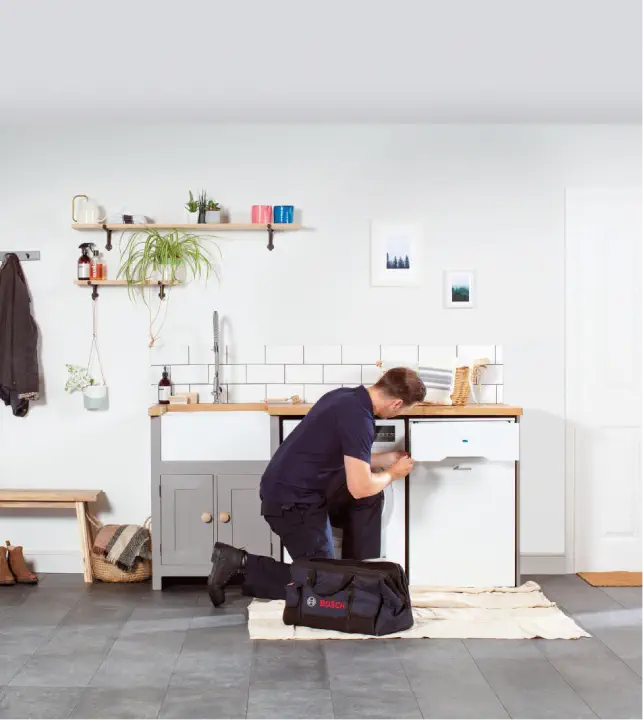The evenings are getting longer, and there’s more of a nip in the air, which can only mean one thing—winter is coming! While a British summer is certainly no guarantee of heat, chances are, your gas or oil boiler will need to step things up in the next few months.
Frosty temperatures mean that boiler maintenance is more important than ever. Nobody wants their heating system to let them down right when they need it most.
Read on for our top tips to get your boiler running smoothly and keep your home warm as the weather outside takes a turn.
Don’t wait until winter
Trust us, you don’t want to wait until it’s below freezing outside to get your boiler winter ready.
Even if it’s still warm outside where you are (lucky you!), be sure to turn your gas or oil boiler on for a test run. Leave it running for 10-15 minutes to give your boiler enough time to warm up properly.
When boilers are left idle for an extended period, debris can build up, leading to blockages and breakdowns. Also, after a stretch of inactivity, the valves and pumps that keep boilers running can seize and stop working.
Starting it up before winter means you can spot any issues early. If anything needs fixing up before winter, you’ll have plenty of time to get it taken care of.
Keep an eye on the pressure
After months of not being used, your boiler’s pressure may drop as the water levels have dipped. This makes it inefficient at heating water at best, and at worst, unable to heat it at all.
Want to know how to avoid low boiler pressure? There are a couple things you can do to keep things running like clockwork.
Causes of low boiler pressure
First things first, what should normal boiler pressure be? Standard pressure should be between 1.0 and 2.0 bars when running, and between 1 and 1.5 bars when turned off.
If your boiler isn’t getting enough pressure, it could be the result of a few common causes:
- Leaks in your pipes or general heating system
- Faulty radiator valves
- Damaged or broken boiler parts
- Recently bleeding your radiators
Fixing pressure loss in your boiler
Follow these easy steps to fix low pressure in your boiler to get things back up and running.
- Keep an eye on your boiler: Prevention is better than repair in all areas of life, and it’s no different with your heating system. Make a habit of routinely inspecting the pressure gauge to ensure it stays between the optimal 1 and 2 bars.
- Turn it off: Safety comes first! If the pressure is too low—or too high!—switch off your boiler and let it cool completely.
- Top it up: If you notice the pressure is low, carefully top up the water levels through the filling loop. This is the connection between your mains water supply and your heating system. Monitor the pressure gauge to see if the levels climb back up to normal.
If you’ve tried all of these steps and your boiler’s pressure gauge is still on the low side, contact your local boiler engineer. When in doubt, leave the bigger jobs to the professionals to be on the safe side.
Check your oil levels
If you have an oil boiler, be sure to check your oil levels before you start using it. If you notice the levels are running low, schedule a top-up for your oil tank as soon as possible.
If you let the tank empty, sediment can gather at the bottom. This can then get pulled into your heating system, which can cause damage to your heating system.
Bleed your radiators
This should be an annual practice to maintain a healthy boiler. You’ll know your radiators are in need of bleeding if they’re colder at the top than they are on the bottom, or there are any odd noises like clanging when you switch your central heating on. This means there’s trapped air pockets that need to be let out so your radiators can operate as efficiently as possible.
Bleeding your radiators is a simple process. All you need is a radiator key to open the valve, and a towel or bowl to catch any excess leaking.
Top tip: If you don’t have a radiator key, a flat head screwdriver will also do the job!
- Turn off your heating to prevent any burns from hot water.
- Locate your radiator bleed valve. This is usually on one side of the top of the radiator.
- Place a bowl under the valve in case of leaking and for easier clean up.
- Insert your radiator key into the bleed valve and turn it counterclockwise. You’ll know you’re on the right track when you hear hissing as the air escapes.
- Keep the valve open until all the air is released and water leaks out.
- Once there’s a steady stream of water coming out, turn the radiator key in the valve clockwise to tighten it up again.
- Careful not to tighten the valve too much, as it could cause damage!
- Repeat the process for every radiator in your home.
Bleeding your radiators as winter approaches will help your central heating system run efficiently, maintain a cosy home, and save you money in the long run.
Insulate your pipes
Insulated pipes are important to prevent the external condensate pipe from freezing in the cold winter months. Frozen pipes will cause your boiler to shut down.
Pipe insulation, also known as pipe lagging, is a foam material that can be easily fitted around your pipes to keep water flowing, no matter the temperature outside.
Even autumn can bring chilly conditions, especially at night. If you find that your pipes have already frozen before you could insulate them, don’t worry. There are a few things you can do to remedy the situation.
- First, turn off the water supply. This will limit any leakage if the pipe ends up bursting.
- Identify which pipe(s) froze by turning taps on and checking the water pressure.
- Never use an open flame to thaw frozen pipes! This could cause severe damage to the pipe and leave you with much bigger problems. Instead, gently thaw the pipe with a hairdryer on the lowest setting. You can also try dipping towels in hot water and wrapping them around the pipes for slow and steady thawing.
Schedule your annual boiler service
One of the most important things you can do to keep your boiler running smoothly is to get an annual service. Servicing can extend your boiler’s lifespan and help prevent future repairs. Plus, regular maintenance can reduce energy bills and help you avoid forking out for a replacement boiler.
A standard boiler service involves a thorough inspection of your central heating system. The engineer will look for any signs of wear and tear and will carry out any necessary repairs. Having a professional look over your boiler is crucial to limit the risks of leaks, fires, and carbon monoxide poisoning.
With our professional boiler maintenance services and repairs, our experienced engineers will keep your home warm all year round. They can also offer advice on ongoing maintenance so you keep your heating equipment in tip-top shape in between services. You can relax knowing that no matter the issue, we’ve got you covered.
Keep the cold out and the heat in this winter. Get in touch today to book your boiler service.


